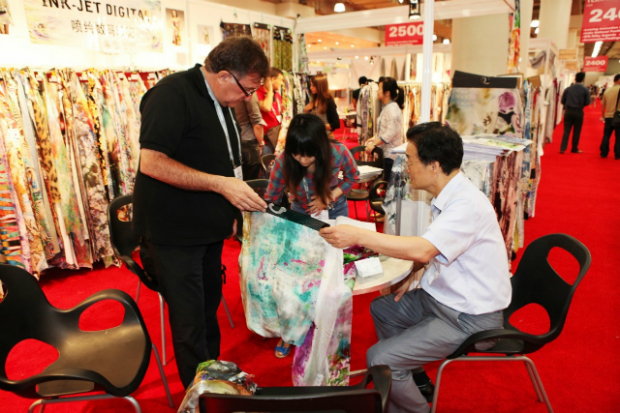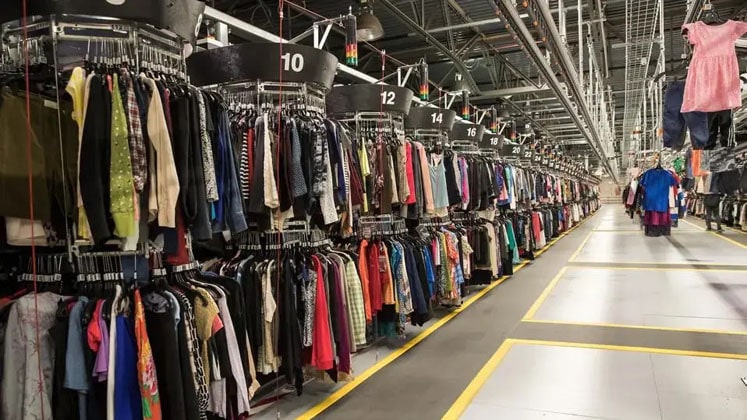FW
With eight foreign companies announcing their plans to invest around $700 million, the American textile industry has been witnessing a sudden rise in foreign direct investment (FDI) over the past eight months. These investments are expected to generate about 1,900 new job opportunities in North Carolina, South Carolina, Georgia, and Louisiana.
With ‘Made in USA’ trend gaining momentum, the United States is emerging as an attractive option for textile manufacturers looking for competitive energy, transportation, and fiber costs compared to current sourcing destinations like China, which is grappling with rising labour and raw material cost. The surge in investments is also being attributed to US trade policy in the textile sector. Over the past 25 years, the country has completed a series of free trade agreements that include a Yarn-Forward Rule of Origin for textile and apparel products.
The Yarn-Forward rule has helped the US textile industry become the third largest exporter of textile products in the world. US exports of all textile products were around $17.9 billion in 2013. Over the past 10 years, textile exports have grown exponentially from $12.7 billion in 2003 to $17.9 billion in 2013, a 40.6 per cent increase.
Examples of FDI investments include largest investment announcement of about a quarter of a billion dollars from Gildan Activewear, based in Montreal, Canada. Apart from Gildan, since August 2013, textile companies from India, Mexico, and China have announced new investment plans in the United States.
www.gildan.com
The IAF (International Apparel Federation), BKMEA (Bangladesh Knitwear Manufacturers and Exporters Association) and HCIA (The Hellenic Clothing Industry Association) have tied up for a project on capacity building, network extension and knowledge transfer in Bangladesh.
The project will involve training sessions in Bangladesh along with networking trips to Europe and Bangladesh. IAF’s main focus is on its members and it will be setting up a peer group to which it will invite members with specific interests in the Bangladesh knitwear industry.
The accord was signed at the IAF office in Zeist (Netherlands) by Mansoor Ahmed and Han Bekke, Secretary General of IAF. IAF has got EU funds for the project and as a result BKMEA and HCIA will be able to better service member companies by gaining more international contacts, knowledge and more insights.
IAF is the world’s leading federation for apparel manufacturers, their associations, apparel retailers and the supporting industry. BKMEA is an association of about 1,700 knitwear manufacturers and exporters from Bangladesh that represent the largest export earning sector of the country.
Iafnet.eu
Pakistan wants to discourage import of cotton yarn from India. And in a bid to curb imports it may impose 5 per cent customs duty on Indian cotton. Different stakeholders in Pakistan have expressed serious reservations over the unrestricted import from India. They say, the Indian government has increased its subsidies on textile products, especially, on yarn and that India is providing other incentives such as duty drawback and technology upgradation fund to subsidise its products. Since cotton yarn imported from India is 15 to 20 per cent lower than local market rates, this is hurting the local industry.
Their main grouse is that India has not provided a level playing field to Pakistani exports, especially in the textile sector. Pakistan imported 5,223,129 kg of cotton yarn in three months whereas the imports from India were 4,220,893 kg. For imports of 345,070 kg of single carded-8 cotton yarn, imports from India stood at 326,589 kg in three months. For imports of 557,510 kg of single carded 8-25 the Indian share remained at 470,998 kg. The country imported 1,395,570 kg of single combed (71 and above) while the import share from India remained at 1,308,813 kg.
The Radici Group has three production and processing sites in Italy and Switzerland. Its polyester yarn volume has been growing. It closed year 2013 with a greater market share in many of its target polyester market sectors. Outstanding results were achieved in the outdoor furnishings, technical/industrial and automotive segments.
Outdoor furnishings (fabric for Tensil structures, solar protection, and garden furnishings) was one of the markets successfully targeted by Radici’s Pet Yarn. From 2011 to 2013, its polyester yarn, notably the Radyarn UV stabilized line, registered a sales volume increase of 60 per cent.
Good results were also achieved by the Radyarn FR flame retardant yarn. These items meld flame retardant properties with custom tailoring options and cost efficiency. For these products, the company has specialists who provide customers with full technical support, from yarn design to fabric design, processing, and testing and certification procedures. In FR target markets, which include furnishings, contract and public transport, during the last three years the company’s volumes have grown by 60 per cent.
The company plans to include new multi-functional products, yarns endowed with a combination of properties achieved through special additives. For example, for the indoor furnishings segment, Radici Pet Yarn, in collaboration with an important customer, is developing a solution-dyed 100 per cent bio-degradable yarn featuring UV screening and excellent flame retardant properties.
www.radicigroup.com/
Japan's Shima Seiki, a leading manufacturer of computerised flat bed knitting machine is displaying its latest version of its SDS-ONE APEX3 3D design system at the Preview in Daegu exhibition, March 5 to 7, Korea. Shima Seiki is also the pioneer in complete garment manufacturing technology called ‘Wholegarment’ wherein an entire knitted garment is produced on the knitting machine without the need for linking or sewing afterward. The new SDS-ONE APEX3 3D system supports the entire process of apparel production from planning and production to sales promotion and has a capability for virtual sampling as well that offers great savings in the sample making process.
This is an all-in-one 3D design system that supports all aspects of fashion design and production. It’s at the core of Shima Seiki’s Total Fashion System concept. Ultra-realistic simulation capability allows virtual sampling to minimise time and resource consuming sample making process. Products can also be evaluated using 3D simulation, such as 3D modeling, 3D fitting and 3D mapping. APEX3 also supports design and simulation in a variety of other industries such as circular knitting, weaving, pile weaving and printing.
www.shimaseiki.com/
 At the recent Texworld 2014 that took place at Javits Center in New York City, American buyers showed no reservations about rising costs in China or about lifting of China’s cotton stock piling policy. Though there have been talks about how manufacturing and production is gradually shifting back to the US due to rising labour, freight and raw material costs going up in supplier countries, buyers’ at response Texworld only ascertained the fact that they are still dependent on imports and have prepared themselves for the increase in costs.
At the recent Texworld 2014 that took place at Javits Center in New York City, American buyers showed no reservations about rising costs in China or about lifting of China’s cotton stock piling policy. Though there have been talks about how manufacturing and production is gradually shifting back to the US due to rising labour, freight and raw material costs going up in supplier countries, buyers’ at response Texworld only ascertained the fact that they are still dependent on imports and have prepared themselves for the increase in costs.
The 16th edition of Texworld USA, the New York-based bi-annual trade show had US at its focus. It also hosted three international pavilions – with delegations from Turkey, Taiwan and Egypt.
No major concern over rising costs
Though players in importing countries are aware that increasing labour costs in China are putting pressure on the textile prices, buyers seemed to have factored in this cost and prepared themselves in advance. According to them, since the price rise is happening step by step, though it is finally passed on to the customers, they are not complaining as long product quality is maintained.
are putting pressure on the textile prices, buyers seemed to have factored in this cost and prepared themselves in advance. According to them, since the price rise is happening step by step, though it is finally passed on to the customers, they are not complaining as long product quality is maintained.
But experts point out that in the last decade, US has got used to importing from China, so that dependency on the country’s strength will not get hampered easily. On the other hand, the emergence of other sourcing destinations like Vietnam and Cambodia and now Japan with its currency going down, are being looked at as options for sourcing high-quality, affordable fabrics. Also a lot of focus is getting shifted to the TPP bloc (the Trans-Pacific Partnership – a proposed trading bloc that has countries like Australia, Brunei, Chile, Canada, Japan, Malaysia, Mexico, New Zealand, Peru, Singapore, the United States, and Vietnam].
Apart from price hikes in China, a number of companies that import from other places are finding their costs rising, particularly in Turkey and Peru because of the higher duties that are now payable.
Better quality to improve demand
Players believe that price rise will not be an issue if one focuses on providing good quality to the end user. So for them innovation is the key to remain profitable during slow economy and rising costs. Many players are shifting their attention from mass market products to a product-a level above. Even cutting down on inventories and people is considered a way out to combat price hikes. Also minimizing requirements as much as possible is another measure being adopted by the companies of late.
Accord, an association of western retailers, has called for the immediate evacuation of a readymade garment unit in Bangladesh. Accord had some issues about the main columns along two internal grids of the building housing Jeans Care. Major structural flaws were found in the factory building which could have a serious bearing on workers’ safety. It has asked the firm to evacuate the building immediately.
The main columns along two internal grids of the building were measured to be less than half the size shown on a structural drawing. And the stresses calculated using the simple calculation methods used as back-up to visual inspections indicated that they were stressed beyond an acceptable level.
Inspectors said that they looked at different ways to manage the loading to bring down the stresses to an acceptable level but concluded with the decision to remove the Jeans Care factory from the building. They also recommended evacuating the building until the structure is strengthened or in its present form can be validated as adequate. However the factory MD says there’s no serious fault that requires immediate shut down of the factory. The matter is before the Bangladesh Garment Manufacturers and Exporters Association (BGMEA).
C.L.A.S.S. (Creativity Lifestyle and Sustainable Synergy) booth on the main salon floor at Première Vision in Paris became the one-stop shop and a reference beacon for eco-innovations. People from media, brands and retailers and designers visited the stall in large numbers.
Innovative products from the C.L.A.S.S. eco textile library that garnered interest included, fox fibre new casual jersey and woven fabrics, made from colour-grown organic cottons, organic cotton & Tencel from Shinnigai Textile in Japan where all the colouration is made with a fully commercial range of botanical plant dyes from Cihon-Tec, organic worsted wools from Zignone in Italy with the finest plain and mélange panama and flannel qualities for contemporary tailoring.
Other prominent innovations included Newlife, created using a High Tech Conversion Model (HTCM). It transforms through a mechanical, non-chemical, 100 per cent traceable postconsumer plastic bottles into an unrivaled high tech quality polymer while generating considerable savings in water, energy consumption and carbon emissions as per Life Cycle Assessment conducted by ICEA. Abaca (hemp) and Pina (pineapple) fibre woven wear and accessories from the craftsmen of the Philippines, mYak luxury touch, naturally coloured fabrics and accessories produced in Italy, and made from responsibly sourced baby yak fibre from the nomadic farmers of Tibet. Green Fibers introduced a luxury regenerated fibre made exclusively from noble fibre waste materials collected in the Biella area among many others.
After more than eight years, the C.L.A.S.S. concept has now gone mainstream and blossomed into a reference point. C.L.A.S.S. is a unique, multi-platform worldwide network that showcases exclusive fashion, textiles and materials created using smarter sustainable technology for designers, buyers, media and business.
www.classecohub.org
www.premierevision.com
Abaca a high quality soft banana fiber is now making inroads in world of high fashion as handwoven abacá fabrics are being used by fashion designers. A mix of abacá and polyester is increasingly looked upon as an alternative to cotton in denim in the fashion industry. In automotive engineering, Mercedes Benz makes use of polypropylene thermoplastic and abacá yarn mixture in automobile body parts.
The abaca plant is indigenous to the Philippines, where warm, wet climate and volcanic soils are suited for this cultivation. The Philippines government has decided to promote the abacá industry. Women’s wear designer Tipay Caintic’s knitwear collection at the Future Fabrics Expo primarily used abacá, spun into a silky yarn similar to rayon. Her showpiece was a full length knit evening gown named Black Rain crocheted from banana silk and included a voluminous skirts made out of piña, a material not unlike organza.
Abaca fiber is valued for its exceptional strength, flexibility, buoyancy, and resistance to damage in salt water. Abacá is chiefly employed for ships’ ropes, hawsers, and cables and for fishing lines, hoisting and power-transmission ropes, well-drilling cables, and fishing nets. Some abacá is used in carpets, table mats, and paper. The plant’s inner fibers can be used without spinning to manufacture lightweight, strong fabrics, mainly used locally for garments, hats, and shoes.
The 2009-14 textile policy of Pakistan had allotted Rs 118 billion for lower interest subsidy for technology upgradation. But the textile industry has yet to receive the funds. India introduced the Technology Upgradation Fund Scheme in April 1999. Up to January, 31, 2013, the subsidy amount came to $2.63 billion, which led to an investment of over $39 million in textile machines.
The Indian scheme of integrated textile parks, where entrepreneurs set up their units in these parks, has caught the fancy of Pakistani businessmen. They want similar textile parks and have urged the textile ministry to arrange land for this purpose. They feel that for instance in 25 acres of land, 200 spinning, weaving and processing units can be established.
With Indian textiles strengthened by a load of subsidies, it will be difficult for Pakistan to compete in the textile sector despite being granted GSP plus status. India gives its exporters major incentives for the introduction of new products and markets. The incentive (subsidy) under the focus market scheme currently stands at three per cent. Besides, the Indian government provides institutional support to textile exporters through different textile subsector-specific export promotion councils and textile research centers.












